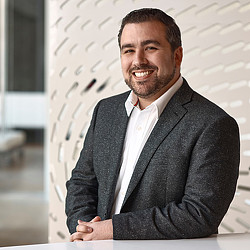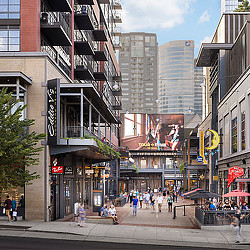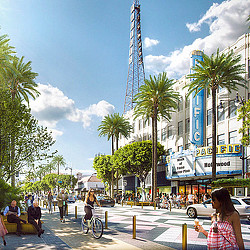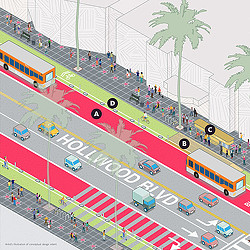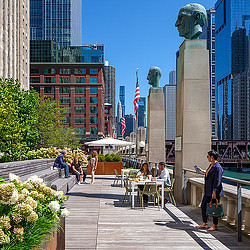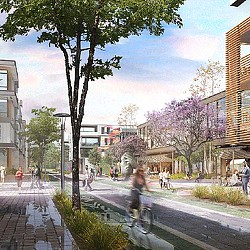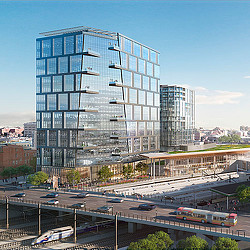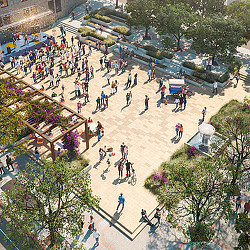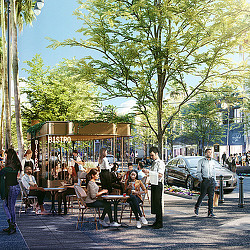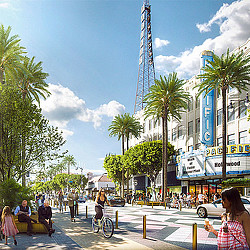The Most Impactful Urban Infrastructure? City Streets
Gensler’s plan for Hollywood Boulevard demonstrates how rethinking city streets can revitalize cities, create healthy communities, and support sustainable mobility.
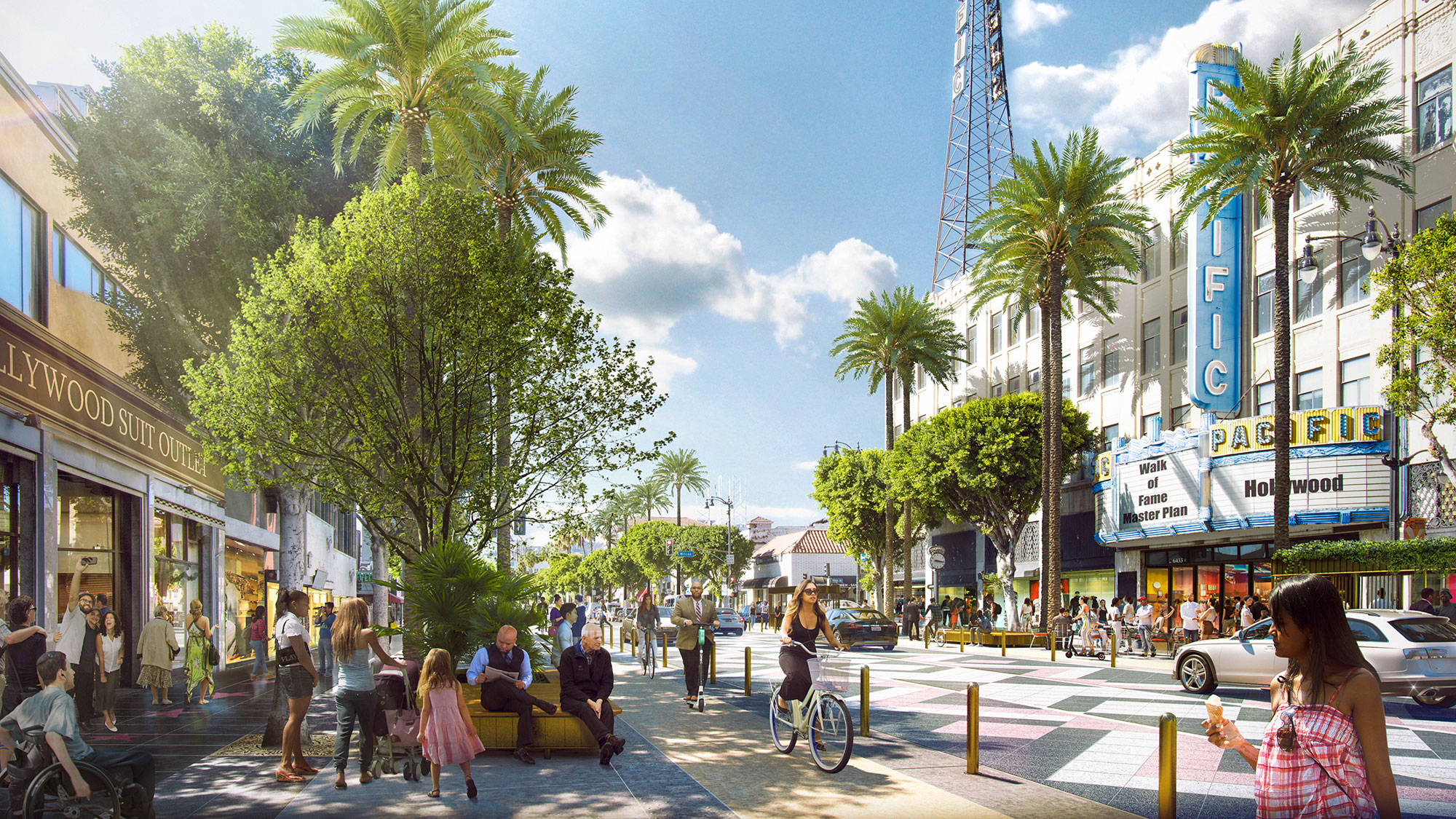
When it comes to urban infrastructure, bridges, tunnels, rail, and highways may get the most attention, but city streets have the greatest impact on the economic, social, and environmental health of communities. Just look at the numbers in California’s largest urban area: while Los Angeles County has a growing transit network, with over 100 miles of subway and light rail service, and an infamous freeway system, with more than 500 miles of highways crisscrossing the Southland, there are over 7,500 miles of streets in the City of Los Angeles and nearly twice as many miles of sidewalk.
Of these, none is more famous than the 1.3 miles of Hollywood Boulevard between Gower Street and La Brea Avenue, home to the Hollywood Walk of Fame. A world-renowned landmark, the Walk of Fame attracts over 10 million visitors annually. Unfortunately, most of these visitors are disappointed by what they find: a 2023 survey ranked the Walk of Fame dead last among global tourist attractions, based on visitor reviews.
The problem? Hollywood Boulevard, like too many streets in American cities, is designed for traffic, not people. Today, 70% of the public right of way is dedicated to moving and storing vehicles with just 30% remaining for people.
Gensler has been working with the City of Los Angeles to reimagine Hollywood Boulevard and the Walk of Fame since 2019. The Hollywood Walk of Fame Master Plan, released in January 2020, flips the ratio of space for people and cars, more than doubling the space available for visitors and residents. Along with expanded sidewalks, the master plan envisions new street trees, furnishings, dedicated bike lanes, and enhanced bus stops.
Gensler is currently leading advanced design for the first phase of implementation, beginning with quick-build streetscape improvements that will encourage economic development, create healthier communities, and support more sustainable mobility options.
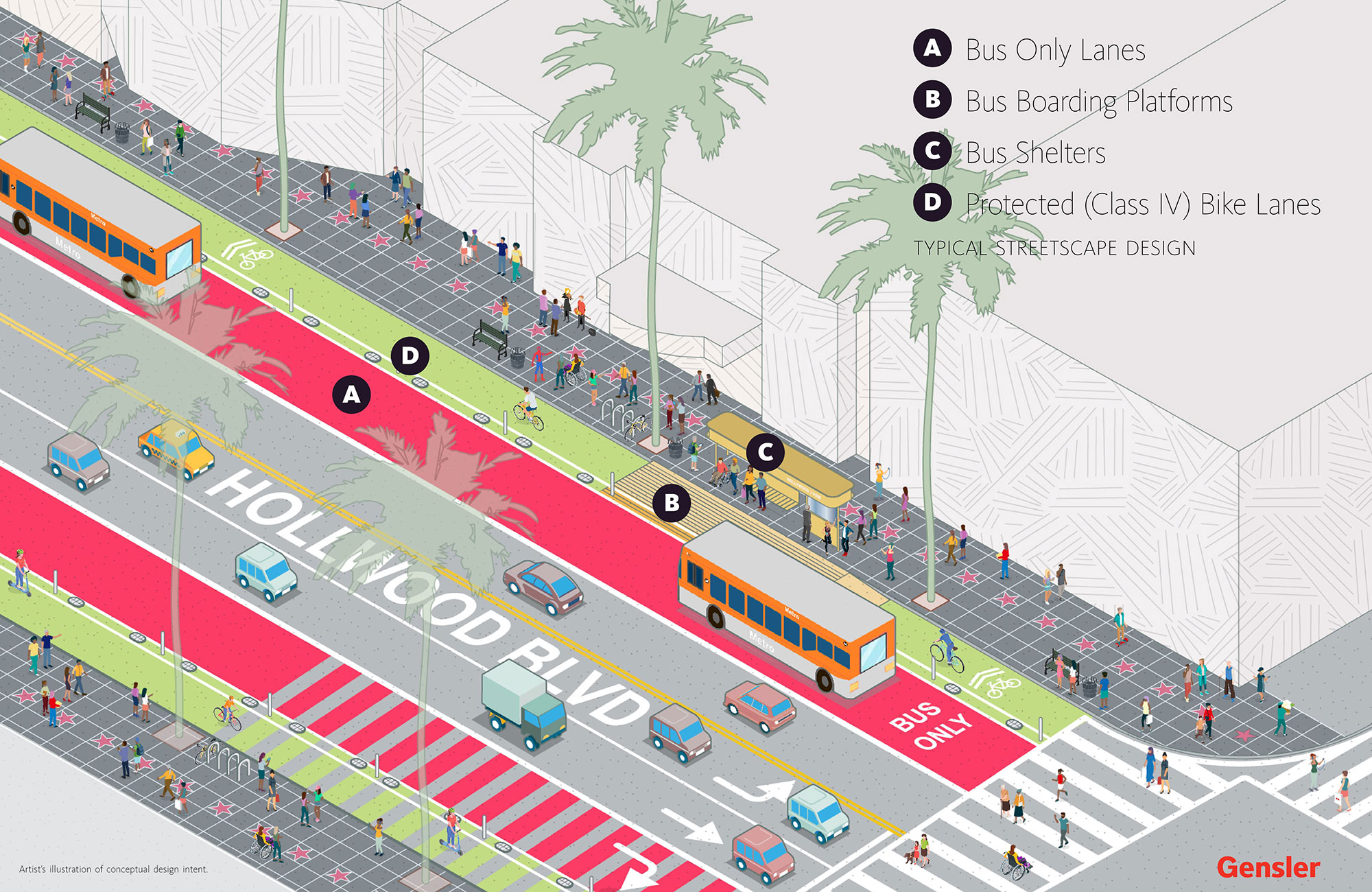
Economic Development
Pedestrian, bike, and transit infrastructure supports economic development. Speaking at the announcement of the quick-build improvements in March 2024, Los Angeles City Councilmember Hugo Soto-Martinez said, “We know that if people come here, they will eat here, they will shop here, and they will spend their money here. By building Hollywood around people instead of cars, we can revitalize this iconic destination.”
Local business leaders agree. “We see this initiative as a turning point,” Kathleen Rawson, president and CEO of Hollywood Partnership, which represents over 400 businesses in the area, told the Los Angeles Times. “What we’re looking forward to the most is being able to recapture some of the space that is being used by vehicles, to have it be used by pedestrians and cyclists.”
Gensler architect J.T. Theeuwes, design director for the Walk of Fame project, sums it up: “For residential and commercial real estate purchases, location is one of the single most important decisions to be made… And right now, perhaps no other location or space type is in higher demand than pedestrian-friendly, outdoor public space.”
Healthy Communities
The streets of Los Angeles are deadly, but the greatest threat isn’t crime: it’s cars. Last year, there were more fatal crashes than homicides, as reported by the Los Angeles Times. Traffic deaths reached their highest level since the city began tracking data, and more than half of those killed are pedestrians. Los Angeles isn’t an outlier: pedestrian fatalities in U.S. cities reached a 40-year high in 2022, according to the Governors Highway Safety Association. Rethinking street design, with an emphasis on pedestrian safety, can and will save lives. Gensler’s design for Hollywood Boulevard includes multiple traffic safety features, such as sidewalk bulb-outs at crosswalks that slow cars, reduce crossing distances, and increase pedestrian visibility.
City streets have additional health impacts beyond traffic fatalities. Auto-oriented street design that encourages driving contributes to health risks from asthma and cancer to depression and obesity, with one study published in the American Journal of Preventative Medicine finding a 6% increase in the likelihood of obesity for each additional hour spent in a car per day. Urban design that prioritizes active transportation, such as walking and biking, can be the antidote to auto-dependency, with benefits to both mental and physical health.
Gensler’s design for Hollywood Boulevard will reclaim street space from parking lanes for expanded sidewalks, landscaping, and dining areas, creating much-needed public space in Los Angeles, which ranks 80th out of the 100 largest U.S. cities in access to park space.
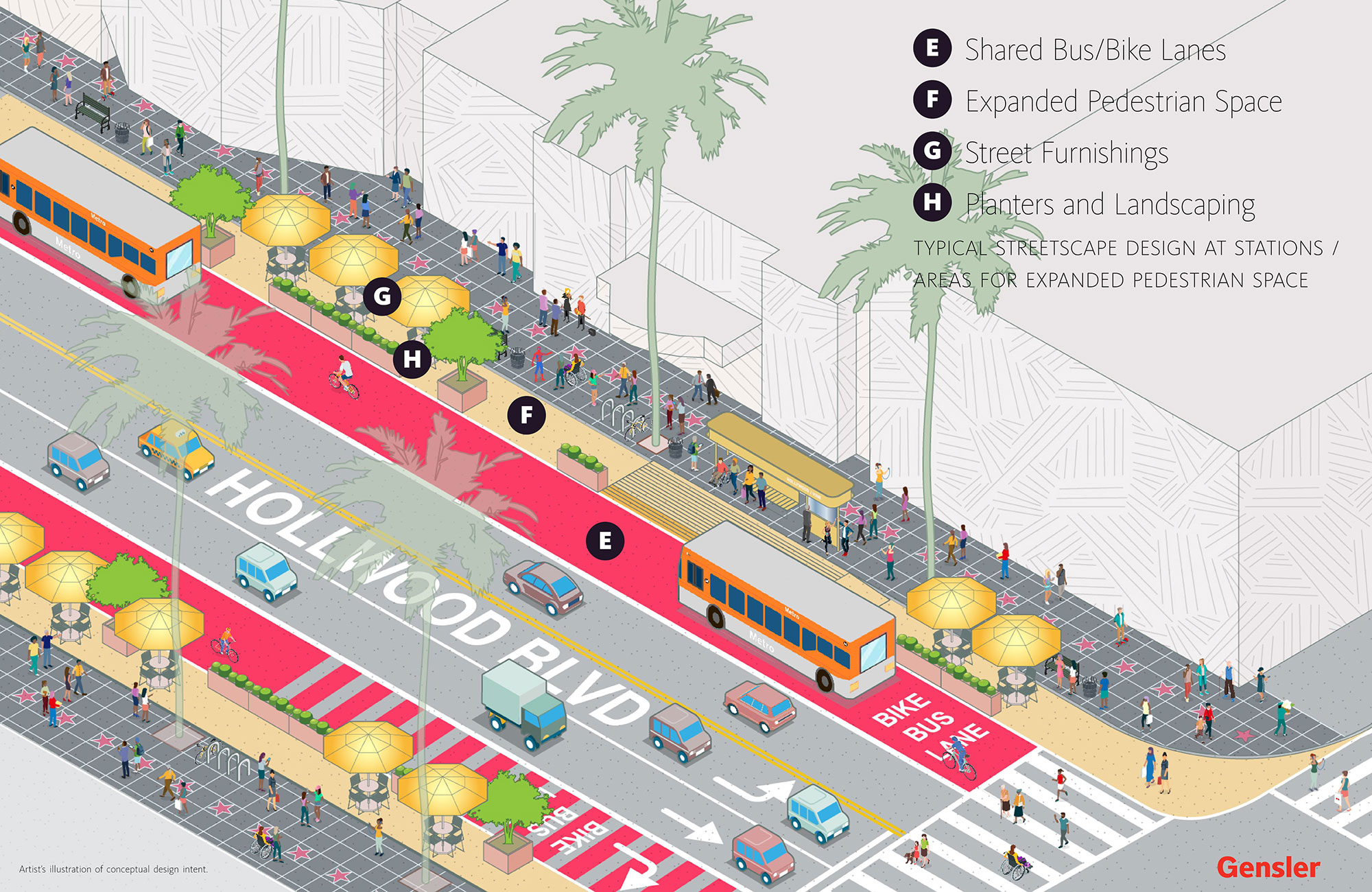
“Public realm projects like the Hollywood Walk of Fame Master Plan not only encourage walking and biking to enhance physical health, but perhaps more importantly, these spaces are catalysts for everyday interactions that combat social isolation,” says Midori Mizuhara, Cities & Urban Design leader for Gensler’s Southwest region. “In a largely car-dependent city like Los Angeles, where we are often atomized in our own bubbles, high-quality, activated public spaces like this are needed more than ever.”
Sustainable Mobility
Investments in active transportation infrastructure are also essential for promoting transit ridership and sustainable mobility. “91% of Metro Riders walk, bike, roll, and take busses to stations” says Dylan Jones, Gensler’s Global Cities Sector leader and principal for the Hollywood Walk of Fame project. “That’s why it’s critical to invest in the design of our sidewalks, bike lanes, crossings, and bus transfers. Doing so is good for supporting robust transit ridership, good for our communities, and good for the planet.”
The benefit to transit riders from first/last mile improvements is why LA’s regional transit agency, Metro, is funding the quick-build streetscape improvements on Hollywood Boulevard. With dedicated bus-only lanes and protected Class IV bike lanes along Hollywood Boulevard (and shared bus/bike lanes in constrained locations), as well as new bus boarding platforms, shelters and other street furnishings, the project will improve access to two major Metro subway stations located along the corridor.
City leaders agree. Los Angeles City Councilmember Nithya Raman celebrates the new vision for Hollywood Boulevard, saying, “[W]e are delivering the kind of transformative investments that Angelenos have been asking for, helping us improve transit travel times and creating a safer environment for all, whether they are walking, biking, or driving.” A fitting Hollywood ending for one of LA’s most iconic streets.
For media inquiries, email .
